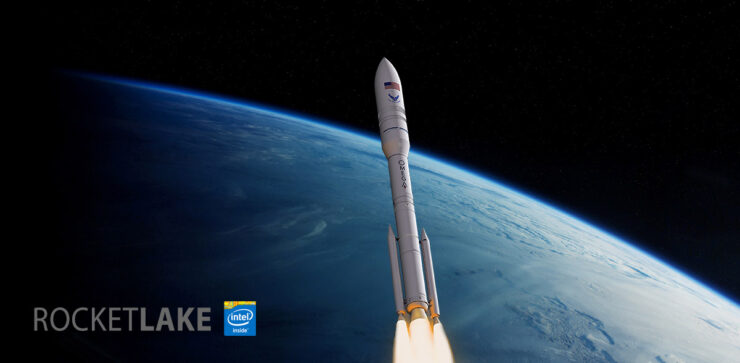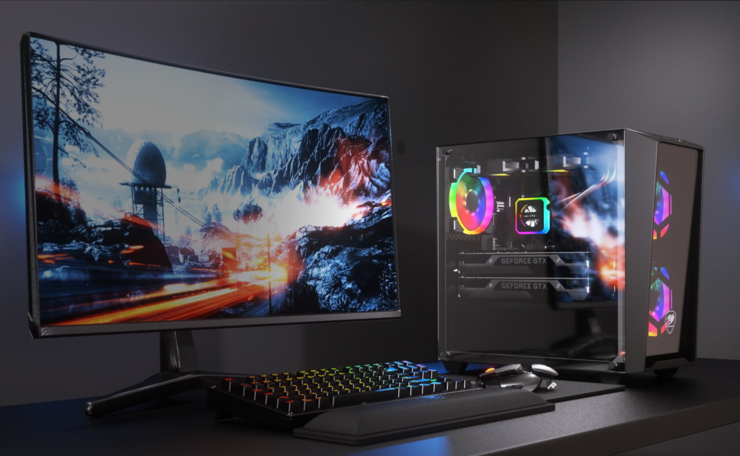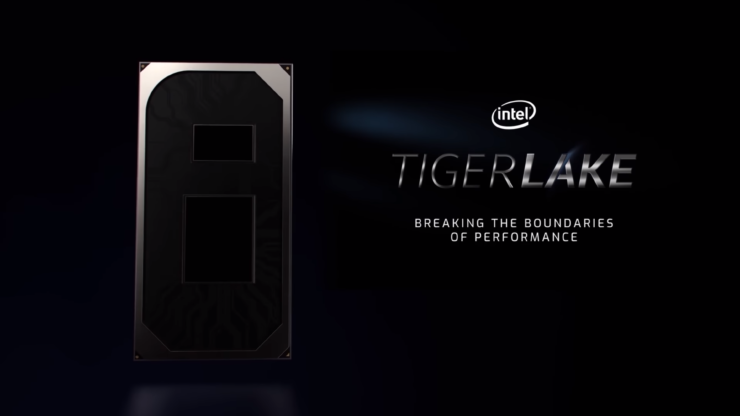Exclusive: Intel’s Highly Anticipated Rocket Lake CPUs Will Land In March 2021 And Be Backwards Compatible With Z490 Motherboards

A featured image for Intel Rocket Lake S
Intel has been planning a major update to its x86 microarchitecture with Rocket Lake and we have an update for our readers. While Intel confirmed a few weeks ago that they are planning to roll out the family sometime in 1h 2021, I have confirmation that the Rocket series of CPUs will be landing in March 2021 and whats more – they will be backwards compatible with Z490 motherboards (likely through a bios update).
Intel Rocket Lake CPUs landing in March 2021
The fact that Intel Rocket Lake processors will retain backwards compatibility with Z490 motherboards is very interesting because RKL-S will be an architecture that supports PCIe 4.0 (something that has eluded Intel builds for quite some time now) while the current CPUs mated with Z490 do not. It is unclear at this point whether motherboard manufacturers will roll out partial support for PCIe 4.0 on older motherboards (yes, that is possible because most high end motherboards already partially support the specifications – the CPUs do not) or whether Z490 motherboards will be restricted to PCIe 3.0.
Considering Rocket Lake is the first major architectural overhaul since Sandy Bridge, we expect great things from the RKL-S line of processors – even though they will be based on Intel’s dated 14nm process. We also expect RKL-S stay in the market to be fairly short as Intel completes its volume ramp to 10nm SuperFin – which is the (finally) mature version of its 10nm process on which Tiger Lake was built.
Another point worth adding here is that a possible reason Intel might be deliberately delaying the switch to 10nm is that the company currently supplies almost 80% of the x86 market and it does not have enough 10nm capacity to fulfill these orders – so its in the company’s best interest to keep a part of its portfolio on 14nm while it finishes the volume ramp to 10nm SuperFin. With Intel’s Fab 42 finally online as well, 2021 might just turn out to be the year Intel starts playing catch up with TSMC.
Recap: Intel Rocket Lake features Cypress Cove cores, PCIe 4.0 and double-digit IPC increase over Skylake
Intel’s Rocket Lake processors will have up to 8 cores and feature 50% more integrated graphics power. RKL-S is based on the 14nm process, but unlike older generations, it will feature a revamped architecture based on the Sunny Cove (Ice Lake) architecture called Cypress Cove. It is essentially a backport of 10nm (non-SuperFin) to 14nm. PCIe 4.0 support and Xe 12 generation graphics have been added as well.
Since it is based on the 14nm process, leaked benchmarks indicates that it will be able to boost up to 5.0 GHz (which is typical for the highly mature process right now) allowing for a best of both worlds situation where a new architecture is able to hit the ground running (speaking from a clock speed perspective) because of the highly mature node.
Rocket Lake S will feature 20 CPU based PCIe 4.0 lanes (4 more than last generation) making it the first mainstream Intel architecture to support the PCIe 4.0 standard and something that has been sorely lacking from the company’s lineup right now. It features new Deep Learning Boost and VNNI support which should give a significant speedup to AI-related workflows. It also features the new USB 3.2 Gen 2×2 standard for blazing-fast USB speeds and has Intel’s 12th generation Xe graphics iGPU – which is nothing to sneeze at. Xe Graphics introduces support for high end video decoders like 4:4:4 HEVC and VP9 while allowing display resolutions of up to 3x 4k60. The integrated memory controller now natively supports speeds of up to DDR4-3200 without any overclocking.
This is great news for enthusiasts because RKL is going to be the first major new architecture in a very long time. However, the fact that it is based on Cypress Cove instead of Willow Cove likely means that we will not see the 25%+ IPC we were expecting although Intel has already confirmed that it *will* be double digits. A 5.0 GHz boost clock combined with a major new architecture should offer the best possible combination for a performance upgrade for Intel customers (although at the cost of similar TDP) in a very long time and I am personally really excited to see how this performs.





